- Radiologic Medical Services, a private practice in Iowa, saw an opportunity to improve its company culture when it changed business managers.
- With leadership support, the new manager focused on instituting a culture built on trust, transparency, and open communication, with the aim of helping employees understand their purpose.
- The group credits its empowered team and caring culture for helping it effectively respond to the COVID-19 pandemic and for increasing its employee satisfaction score by 18%.
When Cole was promoted to business manager after serving as the group’s human resource and training manager, she and practice leaders saw an opportunity to change the team’s culture for the better. With support from the group’s eight radiologists, Cole and the group’s newly appointed business coordinator, Christine Coon, evaluated feedback from the employee satisfaction survey to identify the most pressing issues and began working to address the concerns. “We resolved that we were going to take whatever came out of that survey and act upon it,” Cole says. “It wasn’t easy, and it wasn’t fun, but at the end of the day, I wanted our team members to leave work every day knowing that what they do is purposeful. I wanted them to know that they matter.”
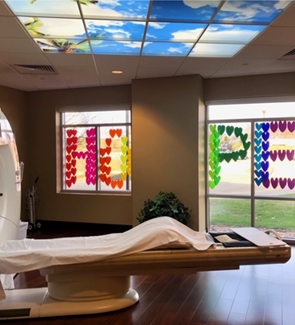 Radiologic Medical Services, a small private practice in Iowa, has cultivated a transparent, caring, collaborative environment that has led to a 61-point increase in employee satisfaction scores. |
“We have been able to use our existing culture to give us the speed, a sense of esprit de corps, a flexibility, and a trust that for us, in our small group, is really an organizational force multiplier,” says Scott M. Truhlar, MD, MBA, MS, FACR, partner and vice president at RMS. Learn more about the approach RMS took in this Journal of the American College of Radiology webinar .
Change of Direction
With about 40 employees and two outpatient imaging centers, RMS took the first step toward improving its culture when the group promoted Cole and Coon to business leadership positions. “We had a vision of what we wanted our imaging centers to be and what we wanted them to look like,” explains Shane A. Kraske, MD, medical director and treasurer of RMS. “We were successful at developing physically inviting centers, but we struggled with the culture until Carrie and Christine took the lead. Now, our employees are much happier. They understand that we’re all one team working toward the same goal of providing our community with quality patient care.”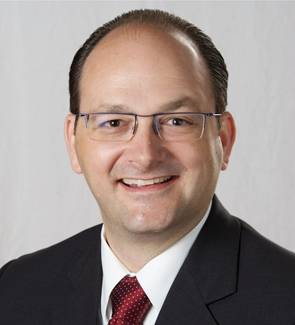 Scott M. Truhlar, MD, MBA, MS, FACR, partner and vice president for RMS, says his group's team-based culture has become a force multiplier. |
When Cole and Coon began reviewing the employee satisfaction surveys, they identified two key factors holding the practice back: trust and communication. With this in mind, Cole made it a point to tell team members that she was always available to talk with them and that they could feel safe coming to her to discuss challenges and ideas.
“I want them to know that they have a voice and that we value their input,” Cole says. “One way we have demonstrated this is when team members come to us with a problem, rather than dictating what they need to do, we ask them what they think the solution should be. They know their jobs best, so who am I to tell them what to do? Guiding employees and allowing them to solve challenges themselves gives them a sense of ownership. They know that they have the opportunity to make things better.”
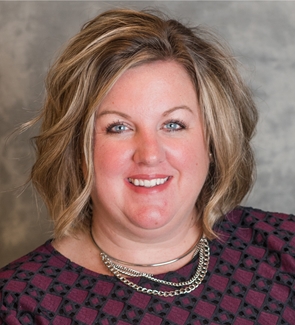 Carrie Cole became the business manager in 2016 and led RMS’ culture change. “Happy employees are healthier, more creative, and more collaborative, which leads to increased efficiency and decreased employee turnover,” she says. |
Employee Empowerment
In addition to letting employees know that they can always come to her with questions or ideas, Cole committed to sharing as much information with team members as possible. She knew she needed transparency to regain the trust that had been lost over time. “It was a pretty rocky road at the beginning of my business manager role,” Cole admits. “But I regained the team’s trust by involving them in the practice and making them aware of everything that was going on — the good and the unfortunate. I knew I had to lead by example and demonstrate my loyalty to the practice by being honest with my thoughts, speaking to each team member regularly, and performing with respect.”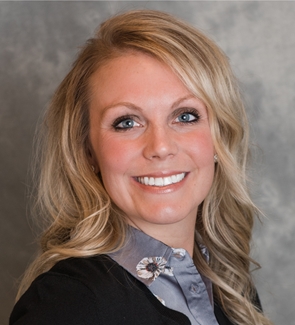 Business coordinator Christine Coon has been integral to ushering in RMS’ culture change. |
Katie Schmelzer, RT, a mammography technologist who has been with the practice for 24 years, chairs the committee and takes its recommendations to leadership when necessary. But most of the committee’s work doesn’t require management approval. “Our leadership has turned a lot of the decision-making over to us,” Schmelzer explains. “For instance, when it comes to scheduling, they’ll say, ‘We need coverage from 7:30 a.m. to 7 p.m. We don’t care how you do it as long as we have the coverage.’ Then they let us figure it out from there. It puts the trust back in us and allows us to be extremely flexible in how we do things, which everyone appreciates.”
Ready for Action
The group’s established record of employee empowerment proved particularly beneficial when the COVID-19 pandemic began spreading across the country in early 2020. At the end of February, Cole received an email from a team member, letting her know that face masks would be in short supply. She took the warning seriously and, along with Coon, immediately went to home improvement stores in the area and purchased as many N95 masks and paint suits to use as personal protective equipment (PPE) as possible.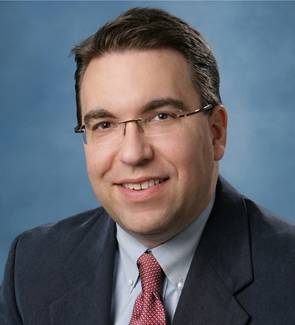 Shane A. Kraske, MD, medical director and treasurer of RMS, and the group’s other radiologists have empowered the business manager and other employees to make decisions in the group’s interest. |
Iowa City reported its first confirmed COVID-19 cases among a group that had just returned from international travel on March 16, 2020, and RMS radiologists immediately reached out to Cole and asked her to work with the team to outline the group’s operational response to the pandemic. “We went to the practice manager and said, ‘Listen, let’s plan for our volume to go down by 40 to 60%. Let’s approach our techs and figure out how we’re going to do this so that we keep them safe and reimagine how we’re going to run our operations,’” Truhlar says.
The next day, Cole met with team members throughout the practice to gather input about how the group would remain open during the pandemic. With leadership approval, they worked out a 50/50 plan in which half of the team members would work one week and the other half would be at home. Then the next week, the teams would swap. The approach included a backup team so that if any team members became ill, other team members could fill their place. It also made employees feel safe knowing that fewer people would be in the office at one time.
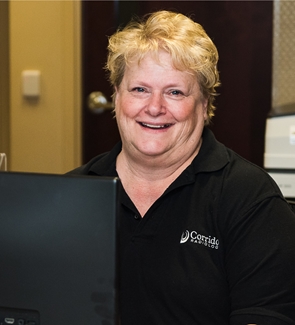 Gina Moore, guest services representative at RMS, says she feels important and appreciated, which impacts her interactions with everyone from patients to co-workers. |
From there, the team devised the operational plans for everything from cleaning exam rooms to maintaining social distancing in the offices. For instance, Moore suggested that they install barriers at the check-in desk to protect staff and patients. “Leadership jumped on that right away and put up plexiglass,” Moore recalls. “Basically, anything reasonable that we asked for, they took care of for us. It’s nice being able to provide input like this and knowing that it will be seriously considered, especially since we didn’t have that before. I think we’ve done an amazing job handling the COVID-19 pandemic.”
Financial Response
The practice’s financial response to the pandemic also benefited from its team-based culture. When the federal government announced the Paycheck Protection, Medicare Advanced Payment, and the Health and Human Services stimulus programs, Cole and Coon took the lead to gather the information necessary to ensure the practice was among the first to apply for and secure these resources. “We were able to get our applications filled out and submitted the first day they were due, which provided us with two months of cash flow and set us up to allow employees to continue to work at full pay,” Kraske says. “We were also proactive about immediately getting some loans approved for the company to make sure that we were backed up in case the worst-case scenario happened, and we didn’t have volumes back until July.”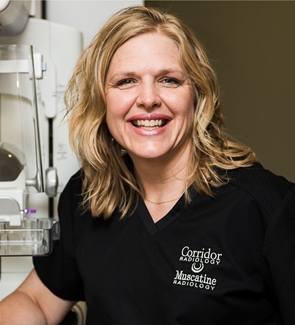 Katie Schmelzer, RT, a mammography technologist who has been with the practice for 24 years, chairs the group’s Employee Advocate Committee. |
These quick actions supported the radiologists’ decision to keep all team members employed during the pandemic. Rather than laying off employees, the group’s radiologists decided to take a 30% pay decrease to ensure that team members remained on the payroll full time — even with the 50/50 schedule that had been developed. “We really took the approach that this storm will pass, and we are going to have to rebuild our practice flow with the team we still have in place when this passes,” Truhlar explains. “There were no furloughs, no firings, no forced vacations, none of that, and that was just a decision that was appropriate for our corporate culture, our practice philosophy for how we want to run our business.”
Back to Business
As the initial COVID-19 cases surged in Iowa and providers banned elective procedures in the state, RMS patient volumes decreased by 63% in April, compared to the same time in 2019. Before the group resumed its regular schedule on May 12, Cole convened an all-staff meeting to talk with the team about reinstating a regular schedule.“I got everyone down into the garage of our clinic and asked people how they felt things were going with our skeleton crew that we were running and what they felt we needed to do,” Cole says. “Christine and I had the skeleton crew’s schedule for the next two weeks ready to present, but the team decided that the next day we were going to go back to a full staff. That was a pretty humbling feeling going out of there knowing that they wanted to work, even though they were getting full pay on the 50/50 schedule. They wanted to be there for each other and the community.”
With the entire team committed to moving the practice forward, its volumes have gradually risen to pre-surge numbers. Cole credits the group’s culture for not only getting it through this uncertain time but for also increasing employee satisfaction from a low of 346 out of 500 four years ago to today’s score of 407— an 18% rise. “This increase is a reflection of years of work that started with the practice leaders,” Cole says. “You have to lead by example and live what you believe. If it doesn’t start with the physicians/board of managers and the leadership team, it will not work. Leaders set the culture.”
Cole recommends that every practice prioritize improving company culture. It benefits everyone, she says. “Happy employees are healthier, more creative, and more collaborative, which leads to increased efficiency and decreased employee turnover,” she says. “Your return on investment is priceless for your business and for patient care.”
Creative Commons
Force Multiplier by American College of Radiology is licensed under a Creative Commons Attribution-NonCommercial-NoDerivatives 4.0 International License. Based on a work at www.acr.org/imaging3. Permissions beyond the scope of this license may be available at www.acr.org/Legal.Share Your Story
Have a case study idea you’d like to share with the radiology community? To submit your idea, please click here.Next Steps
Follow these steps to begin implementing a more engaged, trusting, and caring culture in your practice. Let us know how you did on Twitter with the #Imaging3 hashtag or at imaging3@acr.org.
- Tell employees they can come to leadership anytime to discuss ideas and challenges and expect follow-through by executives.
- Set the example by being open and transparent about sharing information with employees.
- Empower employees to make decisions without requiring leadership approval for every action.
Author
Jenny Jones, Imaging 3.0 managing editor
Join the Discussion

#Imaging3 on Twitter
Call for Case Studies
